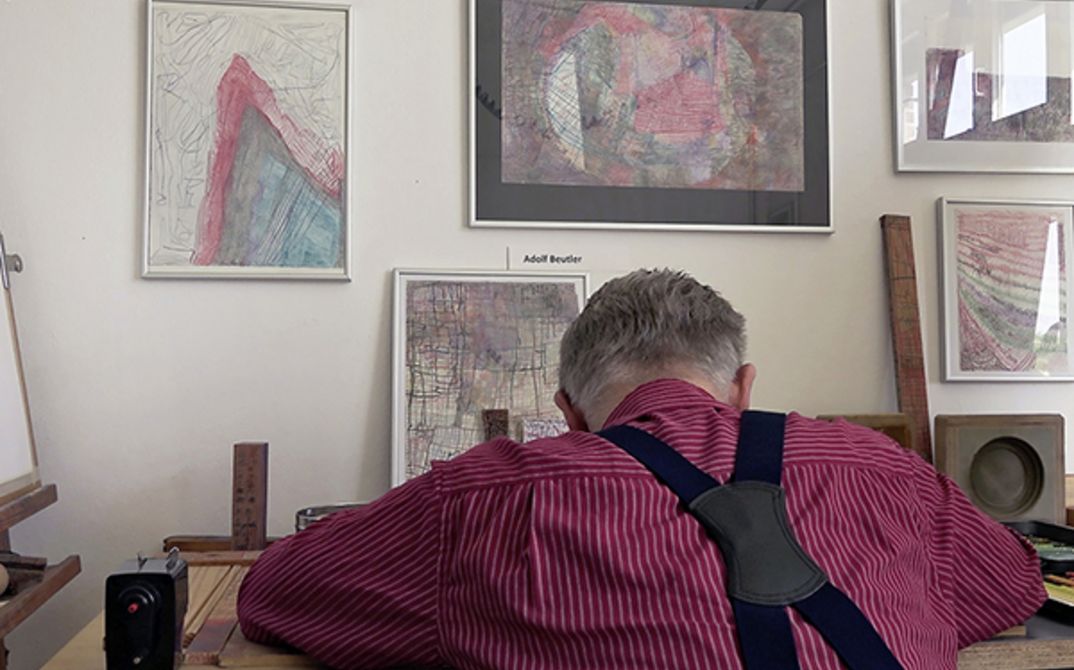106 min. German.
At the Mosaik art studio, artists with disabilities are absorbed in their work. Sabine Herpich observes the artists in the course of creation and directs her gaze at the institution itself: its processes, staff and spaces. The film succeeds in maintaining its focus on the art itself rather than the handicaps of its creators. It is around these works that the institution takes form, thus coming into view first and foremost as an institution for art, not one for people with disabilities. The idea of art becomes holistic, encompassing the people who make it as well as the places where it is created; it means looking at the works, and talking about them, but also art as work, complete with working hours and wage. The filmmaker herself is not invisible. She asks the artists about their thoughts, ideas, methods. As the artists before the camera meet the gaze of the filmmaker, a heightened sense of attention and sensitivity is produced – for the moods of the works, their creators and observers, as well as for this film about art itself, with its gentle, yet not timid, precise yet non-restrictive form. (ab)
Sabine Herpich was born in a small Bavarian town in 1973. She studied philosophy, modern German literature and sociology at the Ludwig Maximilians University of Munich, as well as editing at the Film University Babelsberg Konrad Wolf. In 2012, together with Gregor Stadlober, she made her debut film Neukölln-Aktiv, which was also her graduation film. Since 2015, Herpich has been a member of the collective fsk Kino-Kollektiv and the distribution company Peripher Filmverleih in Berlin, where she lives and works freelance as a filmmaker and editor.
